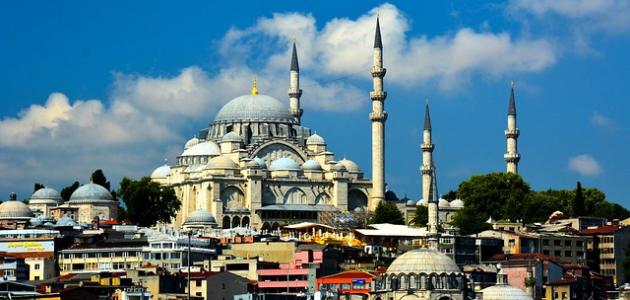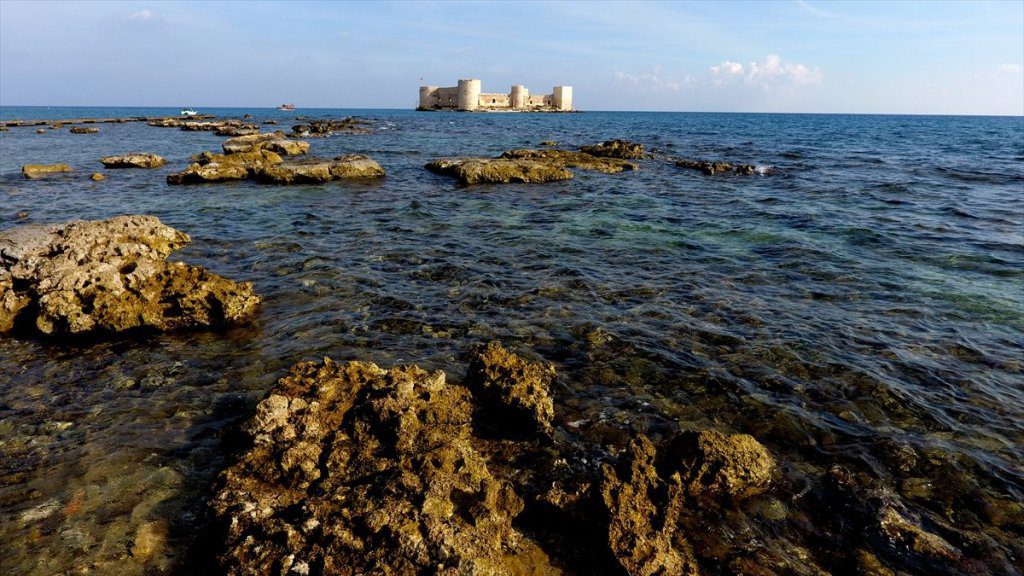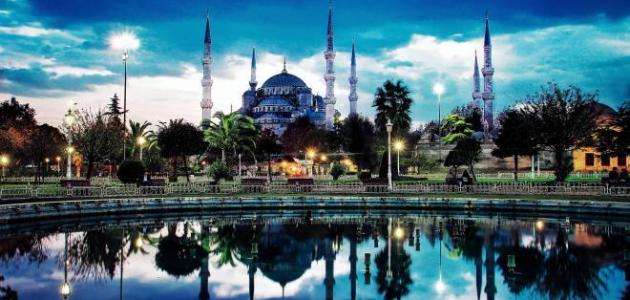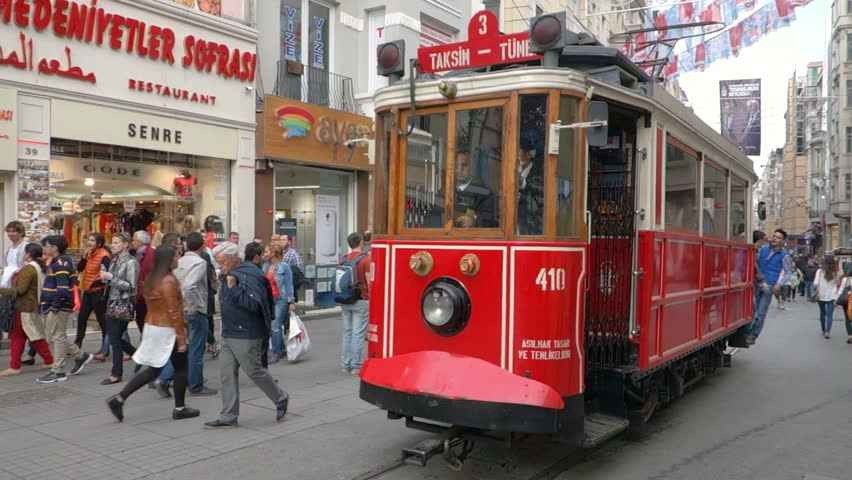Table of Contents
About Istanbul
Istanbul is the capital of empires and the magical city through which East meets the West, and was known by Constantinople, as it was also called Byzantium, Istanbul is located in the continents of Asia and Europe, and its strategic location is a magnet for armies throughout the ages, as it was the capital of Romen, Byzantine Empires, And Ottoman, Istanbul is also currently one of the largest Turkish cities, with a population of about 15 million people, and is seen as an important economic center, and the city extends along the Bosphorus in northwestern Turkey, with an area of 5,461 km2. In this article, we will talk about the most famous markets and tourist areas.
Istanbul’s best markets
There are many big markets in Istanbul, and the most important of these markets are as follows:
The Egyptian market
The Egyptian market is one of the oldest popular markets in Istanbul, and it was called the Egyptian market because of the taxes imposed by the Ottoman government on Egyptian goods at that time, which contributed greatly to the construction of the market, and the market contains commercial stores, such as: spice and dried fruit shops, And natural herbs, and nuts, as the market contains shops selling bronze and ornate artifacts, and as a result of the popularity of this market it is crowded with tourists throughout the week.
Wednesday market
The Wednesday market is located in the Al-Fateh area, on the back of the Al-Fateh Mosque, and it is known as the “Wednesday Bazaar”, where the market consists of 7 main streets and 17 sub-streets, where street vendors and shop owners display their products of fruit and vegetables during the Wednesday of each week. , Meat, fish, eggs, and poultry, as well as clothes, to household items, at very low prices.
Bookstore
The history of the existence of this market dates back to the fifteenth century, and it is a market for displaying and selling books since the Byzantine times, and is located between the Grand Market and Bayezid Mosque, as it was a literary and intellectual center during the Ottoman period, but this market has declined in importance over time after the creation of markets Around the city, but it’s still a popular place for students to buy stationery, school supplies, and international books and novels. A statue has been erected in the middle of the market for a person named Ibrahim Matarqa, the owner of the first book printed in Turkey in 1732 CE.
The big market
The Grand Market or the Covered Market, which was established in 1461 AD after the opening of Istanbul at the hands of Muhammad Al-Fateh, and the market is located inside the old city between Bayezid Mosque and the Ottoman Mosque of Noor, where it extends over an area of 40,000 square meters, and includes 11 gates, 64 streets and 4000 stores, thus becoming One of the largest and oldest covered markets in the world, as this market includes stores selling jewelry, jewelry, antiques, carpets, leather, handicrafts, and others.
Yesilkoy Market
The Yesil Koy Market or the Green Village has been called by this name because this region has wide green spaces, as the market contains 2000 booths, and provides visitors with high-quality products such as clothing, accessories, and cosmetics.
The Copper Market
The Nahhasin market is located in the Amin Ono area near the Egyptian market, and it is one of the oldest and cheapest in the Turkish market, as it is specialized in selling copper handicrafts, from decorated pots, embroidered cups and other craft products, and these products gave the market a distinct atmosphere that made it a destination for many tourists. Local and foreign.
Tourist areas in Istanbul
There are many tourist places that attract local and foreign tourists, the most famous of which are:
- Hippodrome: As the Hippodrome is one of the most important squares in Istanbul, it was built by order of Septimius Severus in 203 AD, and was completed by Constantine the Great in 330 AD, as it was a center of sport and horse racing during the Byzantine era, and the square also contains monuments such as: the German fountain, and an obelisk that has been carved In Heliopolis, the python column.
- Sulaymaniyah Mosque: It was named after Sultan Suleiman the Magnificent, the most famous sultans of the Ottoman Empire, where he entrusted the task of building it to the architect Sinan Pasha, and is one of his greatest architectural achievements, and Sultan Suleiman and his wife were buried inside the garden of the mosque.
- Istiklal Street: It is a modern street established for shopping, and it runs from Taksim Square all the way to the Galata Tower, and is famous for the presence of tourist attractions, such as: shops, restaurants, hotels, churches, Turkish consulate buildings, and interesting art museums.
- Aya Sofia: The Hagia Sophia Church was established by order of the Byzantine Emperor Justin (Justin) II in 537 AD, and later it was converted to a mosque by order of Sultan Mehmed the Conqueror in 1453 AD, and after this Mustafa Mustafa Kemal Ataturk ordered its conversion into a museum in 1935 AD, and the name of Hagia Sophia came from the Greek language Which means sacred wisdom, and was built at the entrance to the Bosphorus strait on the European side of Istanbul, which is known nowadays as the Sultanahmet area. The Hagia Sophia is a world historical landmark, and it is of particular importance to Orthodox Christians and Muslims, due to its religious connotation and memory of a great historical period.
- Topkapi Palace: The Topkapi Palace was built in 1478 AD, and the most important thing that distinguishes the palace is its wide area, amounting to about 400,000 square meters, and it is able to accommodate 4 thousand people. It also includes from the inside a section called the Haramalek section, which includes 400 rooms, and the palace contains a large kitchen that includes about 10 thousand pieces of porcelain and utensils. The Palace Museum also contains many rare treasures and historical artifacts, such as the relics of our master Muhammad, peace be upon him, including: his cloak, a clip of his beard hair and one of his teeth, and the palace from the outside includes a fountain called the Fountain of Sultan Ahmed III, which It was built during his reign in 1728 AD.
- Blue Mosque: It is one of the most famous and largest mosques in Istanbul, which was built between the years 1606-1617 AD by order of Sultan Ahmed I, and was built by the engineer Muhammed Agha, who collected the ideas of his teachers and applied them in its construction, to make the mosque one of the finest produced by the Ottoman architecture, and the reason for its name in the Blue Mosque is due to the brick Blue that covers more than three-quarters of its surface.
- Museum of Islamic and Turkish Arts: In 1983, the museum was moved from the house of Sulaimaniya to the Palace of Ibrahim Pasha, the minister and son-in-law of Sultan Suleiman the Magnificent, where the museum includes a wide range of artwork that dates back to the Umayyads, Abbasids, Andalusians, Fatimids, Seljuks and others, and the museum is rich in carpet and glass shapes Wood and manuscripts.








